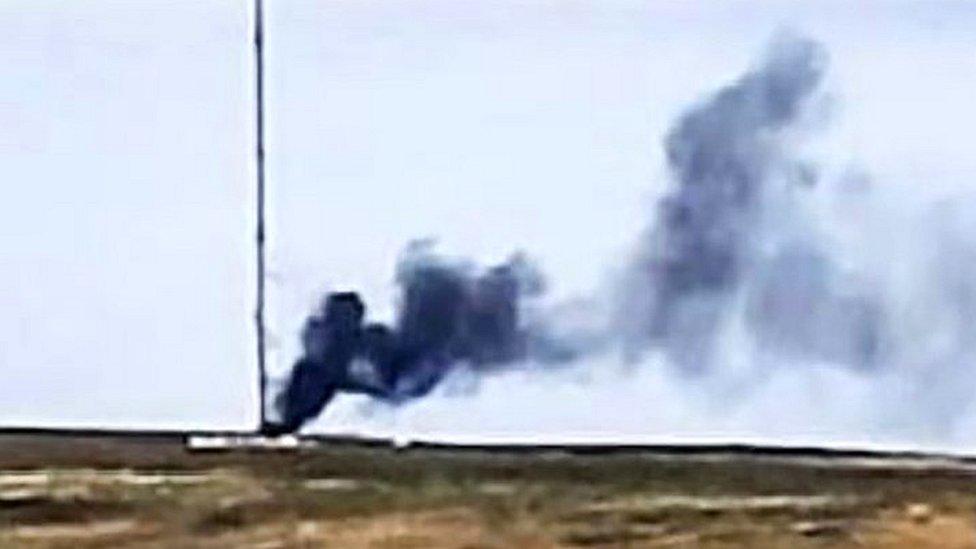Staff at ex-BBC site are 'custodians of legacy'
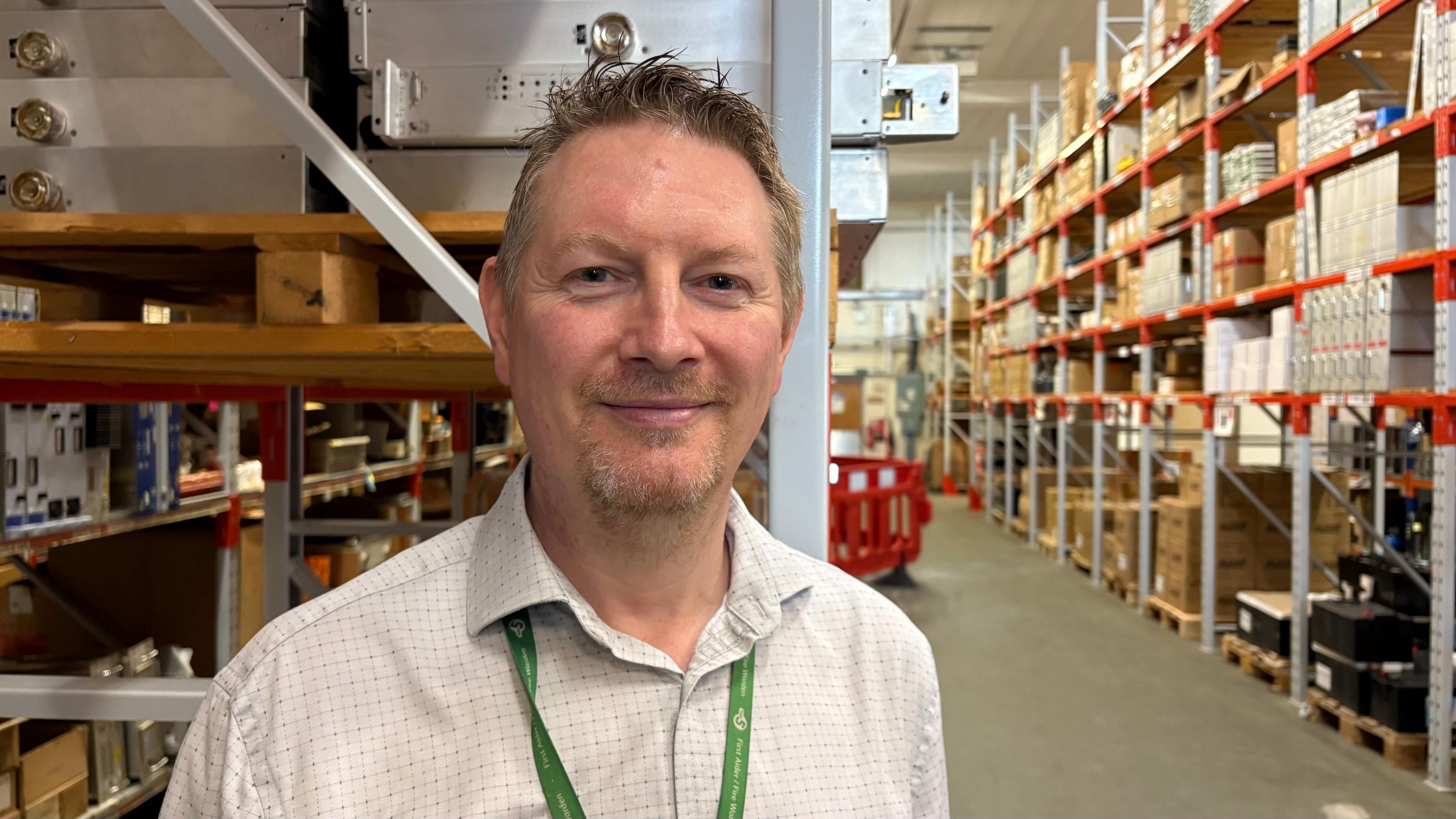
Stuart Turpin, warehouse lead, said he felt he had to "look after" the place
- Published
Staff at a former BBC radio transmission station that opened 100 years ago say they are "custodians of the legacy".
The station on Borough Hill in Daventry, Northamptonshire, opened on 27 July 1925.
It beamed the BBC World Service across the globe for 60 years before closing in 1992.
The site is now occupied by telecommunications firm Arqiva and maintains transmitters across the country.
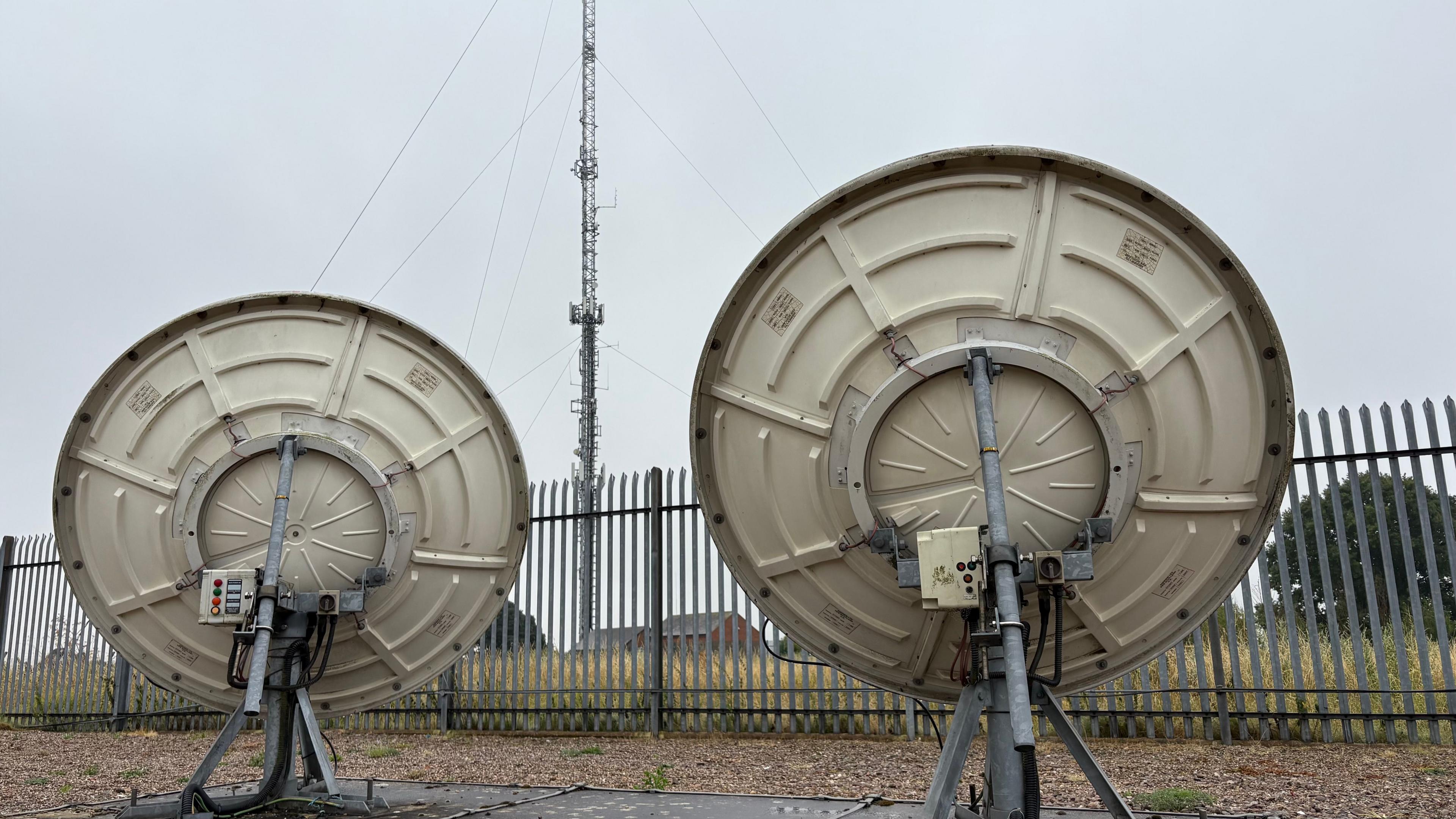
There is one remaining mast on the hill, which transmits digital radio, including the BBC World Service, to the surrounding area
The landmark site once had 40 masts and towers, but now one solitary 100m (328ft) mast remains, transmitting digital radio.
The transmitter halls at Borough Hill look very different now too.
They were once home to huge racks of equipment, with glowing water-cooled valves, flashing lights and indicator needles in glass cases.
They are now full of metal shelves and look very like any of the dozens of warehouses that have sprung up in Daventry since the BBC arrived.
But the Arqiva staff here have not forgotten the role played by this hilltop encampment in the BBC days.
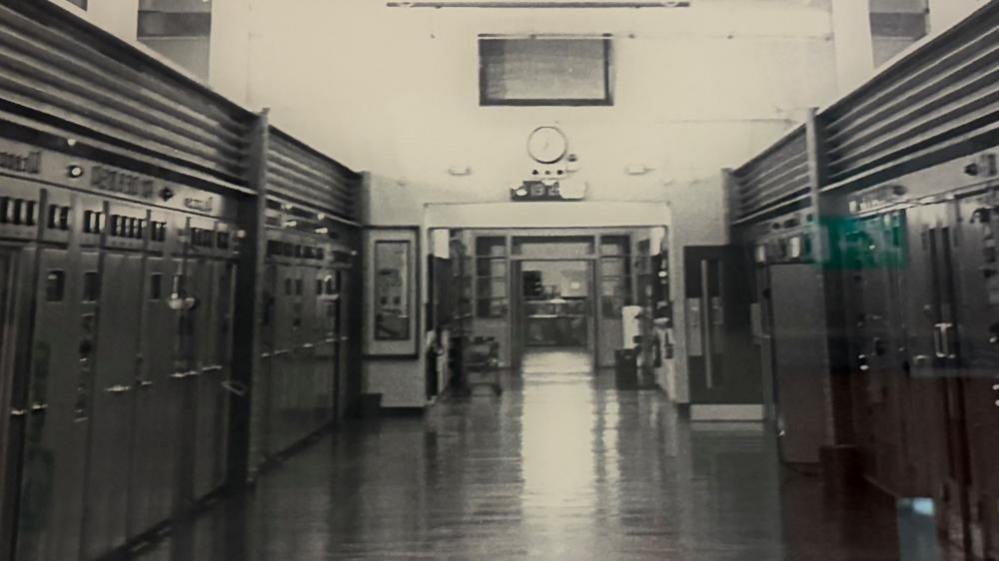
The transmitter halls had shiny floors and cabinets full of equipment in the BBC days
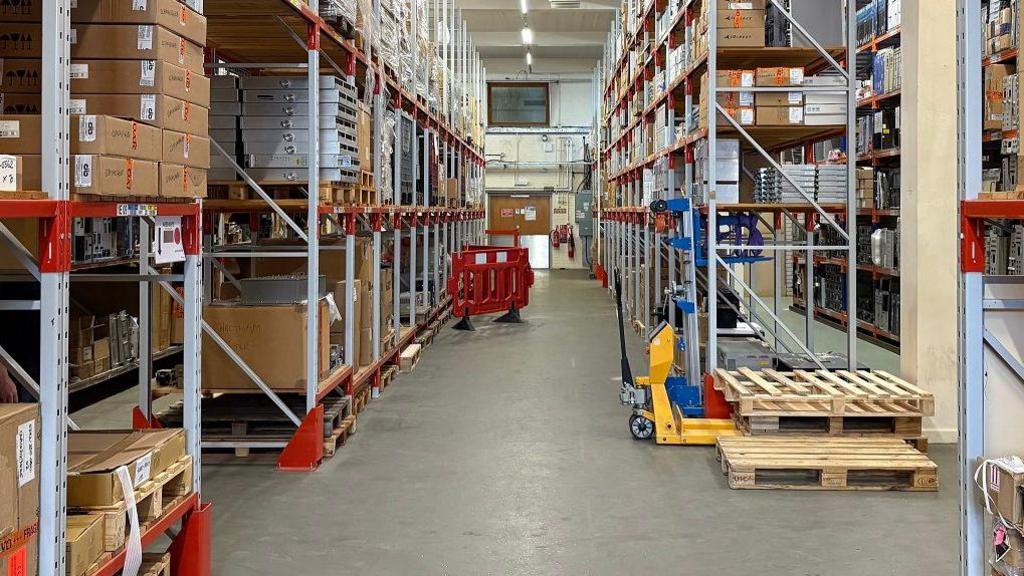
The equipment cabinets have gone from the transmitter halls, although the control room window is still visible
Stuart Turpin, warehouse and logistics lead at the site, said he was "a custodian of the legacy - you're looking after the place, you're doing your best to maintain it as well, and keep the legacy going".
The warehouses hold spares for transmitters across the UK - anything from a small lithium battery to a giant antenna.
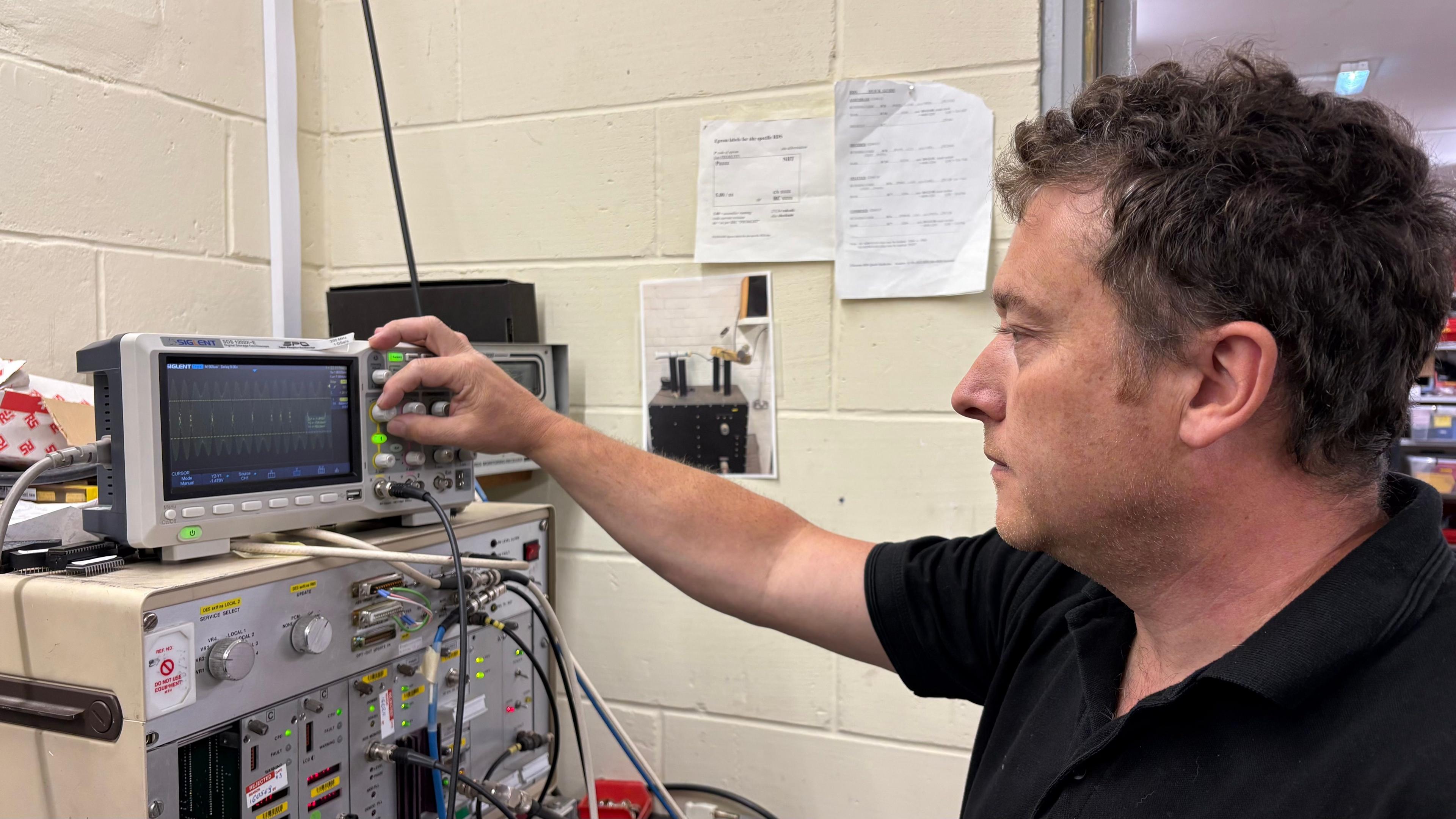
Phil Critchley is one of a team of engineers who repair and test transmitter equipment
A small team of engineers repair broken transmitter components and test them thoroughly before sending them back out.
Phil Critchley, a senior engineer, said: "This is vital - this is what keeps the broadcast network on air.
"Anything that's out in the field, at a transmitter site, is replicated here at Daventry so we can make sure it's working, ready to be used again."
Mr Critchley said he lived in Daventry as a child and would "look up at Borough Hill thinking 'what a wonderful place it would be to work'.
"So here I am."
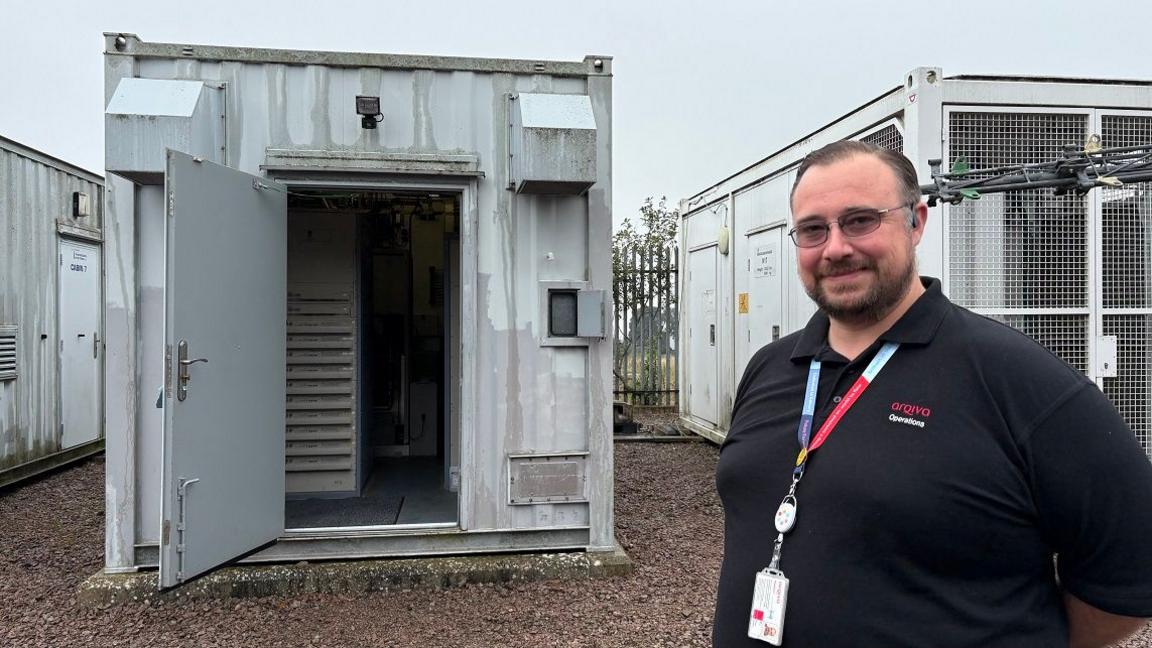
Alan Storer is one of the engineers who looks after the disaster recovery cabins
Another key part of the site's role now is what is called disaster recovery (DR).
If a transmitter collapses, catches fire or just refuses to work, there are mobile cabins that can be sent out with all the equipment needed to get TV or radio services back on air, including temporary masts.
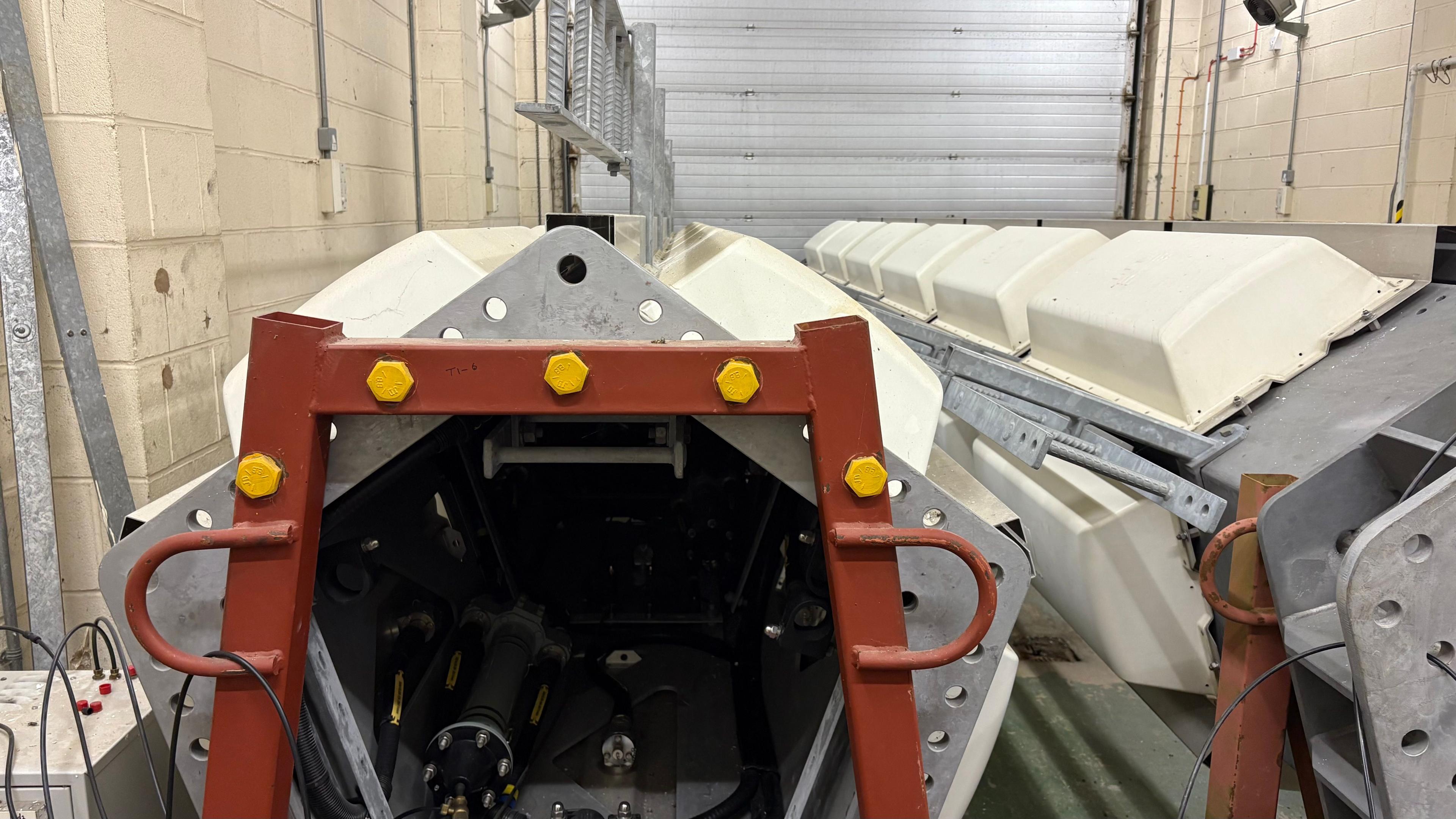
Masts are stored in sections at Daventry to be assembled on arrival at their destinations
Alan Storer, an engineer, was involved in restoring services when the Bilsdale mast in North Yorkshire caught fire, disrupting TV and radio for a million people.
"We got most of the services up and running within the first week," he said.
"We had DR containers placed in places so that work [on a permanent replacement] could carry on but services would still be broadcast."
He added that the history of Borough Hill was one of the things that inspired him to get a job there.
"It's a dream come true for me," he said.
Get in touch
Do you have a story suggestion for Northamptonshire?
Follow Northamptonshire news on BBC Sounds, Facebook, external, Instagram, external and X, external.
Related topics
More related stories
- Published5 July
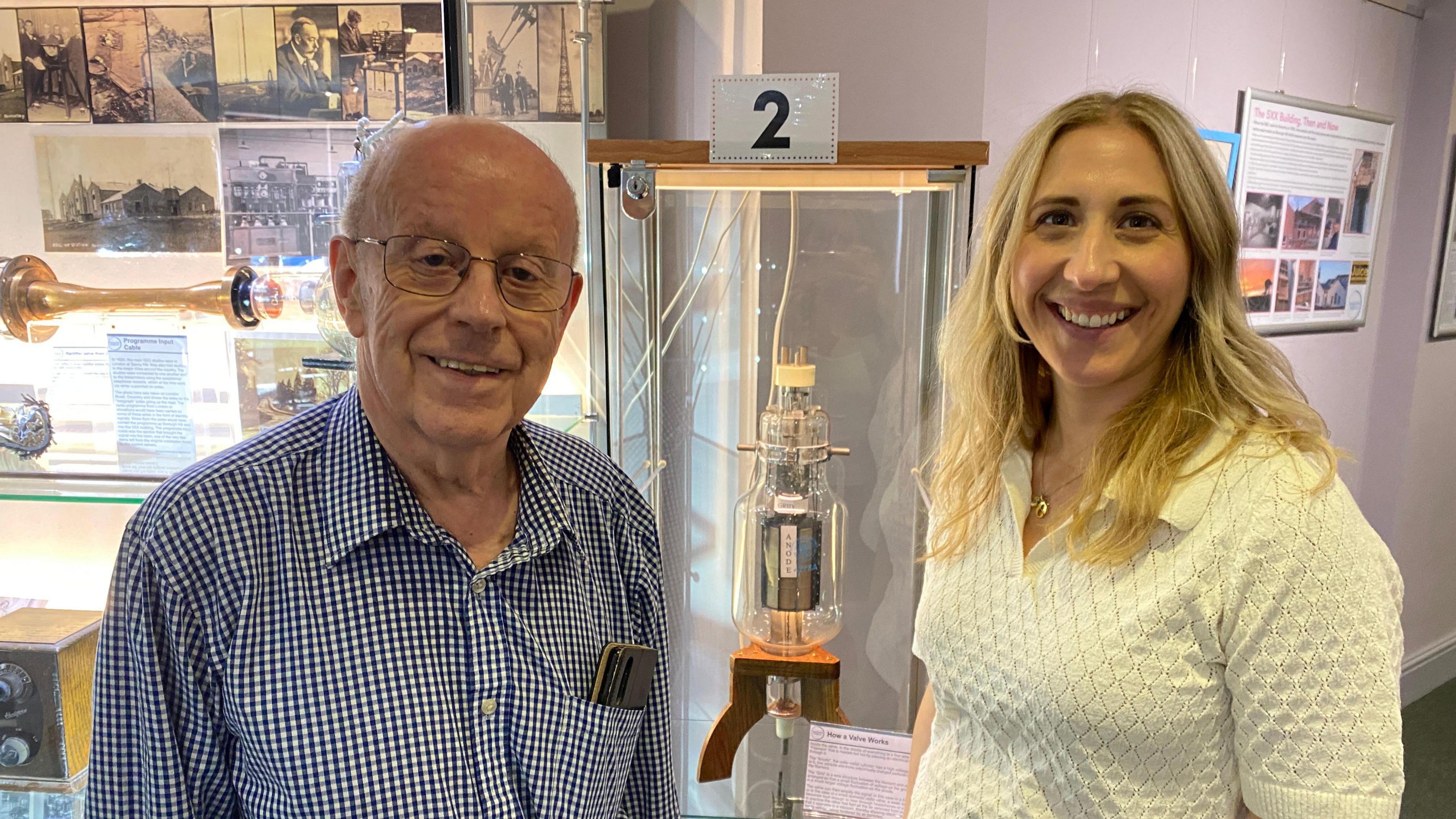
- Published18 October 2022

- Published10 August 2021
